

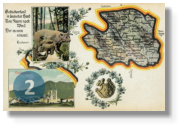
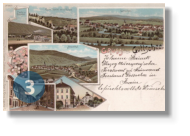
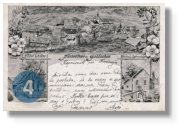
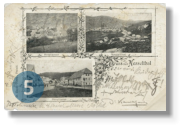
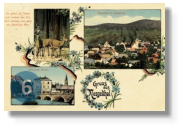
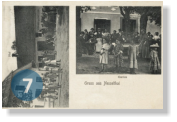
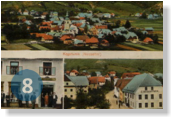
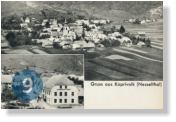
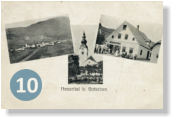
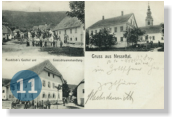
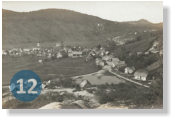
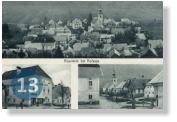
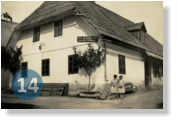
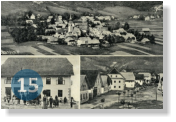
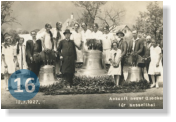

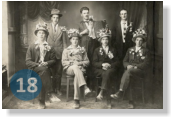
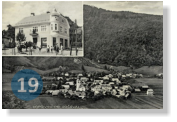
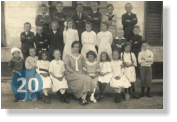
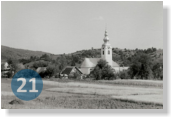

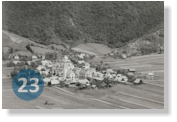

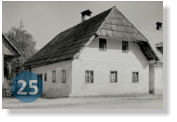
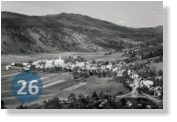

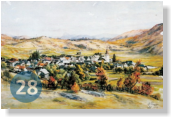

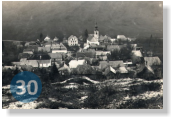
The
collection
contains
some
1800
units
of
postcards
and
prints
of
the
local
studies
collection
Gottscheer
Postcards,
dating
from
1844
till
today.
The
purpose
of
the
digitalised
collection
is
to
preserve
at
least
a
small
part
of
such
imagery
for
future
generations.
The
material
is
intended
primarily
for
descendants
of
displaced
Gottschee
Germans
around
the
world,
and
is
presented
in the English language.
Seed
funding
for
the
presentation
of
the
first
thirty
postcards
of
Koprivnik
was
provided
by
compatriot
Mark
Simonitsch
from
Chatham, Massachusetts.
We
ask
and
welcome
you
to
consider
supporting
the
expansion
of
our
collection
with
your
contribution,
and
thank
you
in
advance for your generosity.
Institute of Preservation and Cultural Heritage Nesseltal-Koprivnik - Zavod Nesseltal Koprivnik
Koprivnik 13, 1330 Kočevje, Slovenija - Tax number: 13212087
Bank account or IBAN: SI56 2900 0005 5558 644, Unicreditbank Slovenija PE Novo mesto - BIC: BACXSI22
POSTCARDS COLLECTION OF KOPRIVNIK (NESSELTAL)

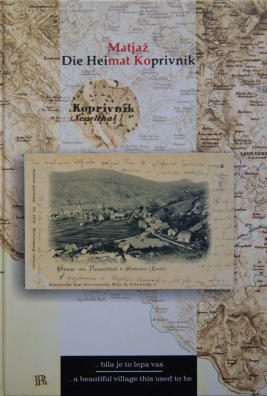
“Die
Heimat
Koprivnik
….bila
je
to
lepa
vas
–
a
beautiful
village
this
used
to
be,”
Author:
Matjaž
Matko,
ISBN
961-236-980-1,
English-Slovenian
edition,
Publisher:
Institute
of
Preservation
and
Cultural
Heritage
Nesseltal-Koprivnik, 2006, 103 pages, 36 photos.
From
his
collection
of
photo-postcards
Matjaž
Matko
has
created
a
unique
book
about
the
former
Gottschee
village
of
Nesseltal-Koprivnik
between
1898-1942.
Born
in
Rudolfswert
(Novo
mesto,
Slovenija)
Matko
lives
in
Koprivnik
where
he
has
formed
the
Institute
of
Preservation
and
Cultural
Heritage Nesseltal - Koprivnik.
Author
Matko
researched
the
lives
of
former
Nesseltal
residents,
their
homes,
buildings
and
public
records.
By
imaginatively
interpreting
this
information
heart
full
yoffers
explanations
of
the
postcard
sender’s
message,
photo
and
address.
Information
about
families,
their
habits,
occupations,
residence
numbers
and
house
names
are
woven
into
short
narratives
that
comment
on
each
postcard.
The
results
are
photos
with
wonderful
descriptions
about
the
rural
life
of
Nesseltal
residents
in
the
twentieth century prior to relocation in 1942.

The
area
of
land
that
constitutes
Nesseltal-Koprivnik
is
a
natural
basin
with
a
large
meadow
that
today
is
edged
by
forest.
Some
of
the
postcard
photos
were
taken
from
the
surrounding
higher
land
and
provide
a
hawk’s
perspective.
Readers
will
enjoy
views
of
buildings
that
our
imagined raptor sees while gliding above the village.
Only
if
the
windswere
steady
could
the
hawk’s
eye
have
noticed
the
children
posing
for
Rudolf
Verderber’s
1925
photograph
of
Miss
Ana
Piškur’s
(married
Ljubič)
on
the
steps
of
the
elementary
school.
Matko
enlightens
us
further
by
listing
the
student’s
villages
and
informs
us
the building is no longer a school, but remains in useas # 9.
In
the
1920s
Josef
Roschitsch,
Nesseltal
15
(“Kürteish”)
asked
photographer
Josef
Dornig
Sr.
to
photograph
his
inn.
Mr.
Dornig
obligingly
combined
two
photos
on
a
single
card:
A
panorama
of
Nesseltal
from
Nakl
in
the
upper
part
of
the
village
and
a
view
of
Roschitsch’s
Inn,
most
likely
taken
from
the
steeple
of
St.
Jakob’s
which
was
destroyed
in
1949.
The
author
comments
that
Roschitsch’s
frequent
use
of
the
Slovenian-Italian
word,
“Malora”
(ruination),
when
playing
cards and in daily conversations resulted in friends adopting “Malora” for his nickname.

Numerous
Nesseltal
homes
and
buildings
are
featured
by
number
and
name.
The
distinctive
Schneller
house
#
43
is
owned
by
Matko
and
used
as
a
Bed
&
Breakfast
for
his
Gottschee
-
Koprivnik
tours.
The
subject
of
one
postcard
is
the
Schneller
family
in
front
of
their
home
in
1935-36
by
Josef Dornig Jr. The card was posted on 19 April 1940.
The
special
effect
of
this
book
is
produced
by
the
charming
narrative
that
Matko
has
developed
from
the
photos
and
messages.
He
notes
the
details
in
the
photos
and
with
evident
fondness
offers
stories
for
the
reader’s
enjoyment.
The
book’s
exterior
is
water
resistant.
A
photocard
of
Nesseltal
is
super
-
imposed
upon
a
map
of
Gottschee
on
the
book’s
front
and
back
covers.
The
pages
are
semi
-
gloss
to
resist
water
and
aging. The book is physically attractive and suitable for table display.

“Die
Heimat
Koprivnik”
will
awaken
memories
of
other
Gottschee
villages.
Readers
who
are
not
familiar
with
Nesselthal
-
Koprivnik
or
who
have
not
had
experiences
of
Gottschee
life
can
blend
the
book’s
images
and
vignettes
with
their
own
family
stories of life in other …….. “beautiful villages (that) used to be….”
Information
about
book
sales,
tours
and
the
“Institute
for
Preservation
of
Cultural
Heritage Nesseltal Koprivnik” is available at:
www.kocevskirog.si
Mark Simonitsch

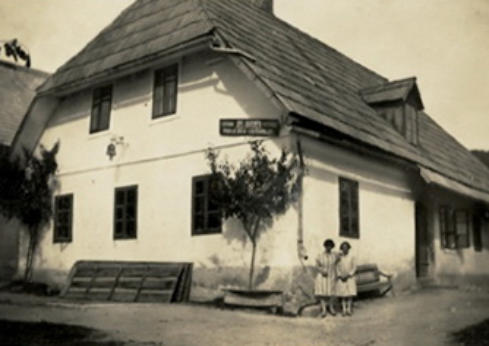

Reichenau (Rajhenav) today

















